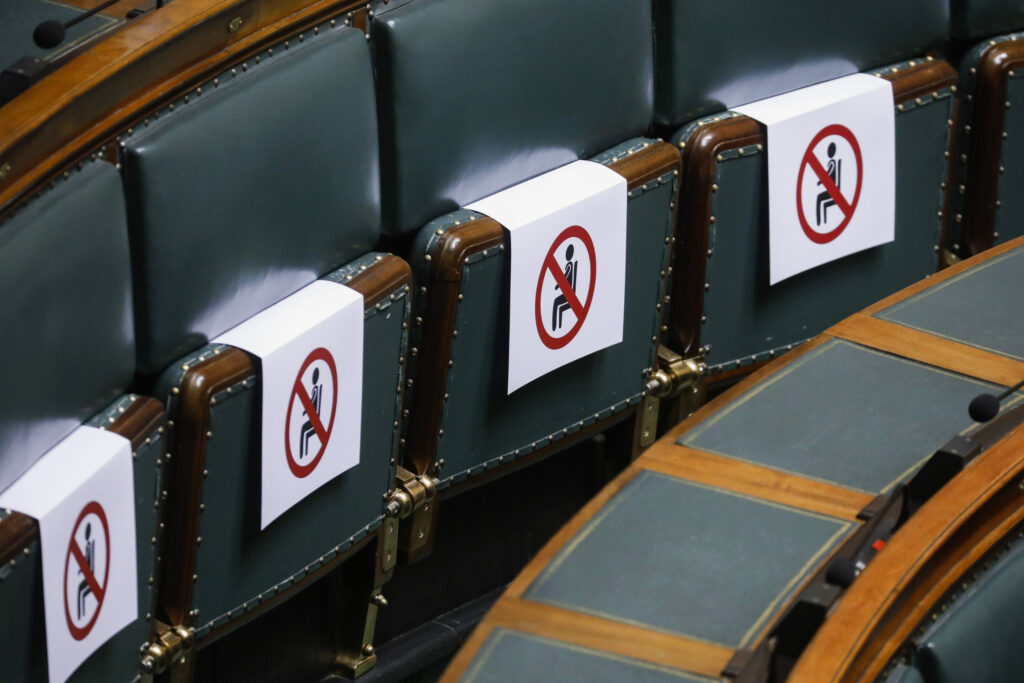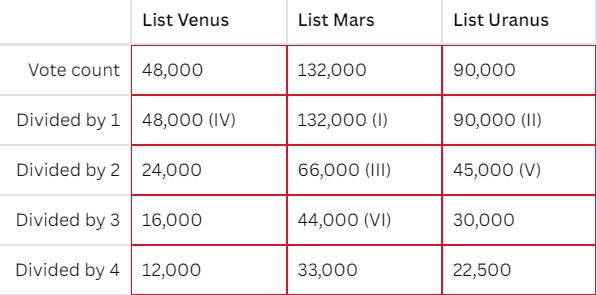The millions of votes cast by Belgians in the federal, regional and European elections on Sunday quickly made it clear how big the share of votes for each party was. But how do these votes translate into parliamentary seats?
Going from votes to seats in the various parliaments in Belgium requires a complex calculation. Importantly, seats are allocated by constituency, and the number of seats depends on how many people live in that constituency.
Since hundreds of thousands of votes have to be converted into a few seats per constituency, a method to do this as fairly as possible is needed. Given the inevitable issues that would be caused by rounding up or down, simply applying the percentages to the total number of seats is not enough.
The D'Hondt method
Therefore, a Belgian lawyer and mathematician Victor D'Hondt devised his own calculation method back in 1878, and named it after itself. While the 'D'Hondt method' is not the only one used to make the distribution of seats as proportional as possible to the result, it is one of the most widely used worldwide.
An important first step is to see which parties have all reached the 5% electoral threshold. In Belgium, parties receiving less than 5% of the vote in a constituency cannot get any seats in that constituency – meaning they can be left out of the calculations.
The method takes into account how many valid votes each party received, the so-called vote count. Next, the minimum number of votes needed to win a seat is determined: the electoral quota. Finally, the number of seats per list is calculated based on the number of votes and the electoral quota.
Step 1: Calculating the vote count for each list
The vote count is the total valid votes for each list (this takes into account list votes as well as preferential ones).
Step 2: Calculating the electoral quota
The electoral quota is the minimum number of votes required to obtain a seat. The D'Hondt method calculates the electoral quota in three steps:
- Divide the vote totals of all lists above the electoral threshold first by 1, then by 2, 3, 4, etc.
- Rank the obtained quotients in order of size until there are as many quotients in total as there are seats to be distributed in that constituency
- The electoral quota is the last quotient to be ordered in this way.
Step 3: Calculating the number of seats per list
A list gets as many seats as the number of times the vote count can be divided by the electoral quota.
If the last useful quotient (= the electoral quota) occurs on two lists, the last seat goes to the list with the highest vote count. If the vote counts are also equal, the seat goes to the candidate with the highest number of preferential votes. If that too is equal, the oldest candidate is elected.
Example:
The Flemish Parliament provides the example below (but in Dutch) to put concrete figures to the abstract calculation method. The table shows how this calculation would be used if 270,000 valid votes were cast in electoral district X, where three parties (Venus, Mars, Uranus) were running and six seats were to be allocated (indicated in Roman numerals).
In the example, list Mars wins the first seat, as 132,000 is the highest quotient. The second seat goes to Uranus with 90,000 votes, the third to Mars again with 66,000 votes, and so on.
The sixth and last seat also goes to Mars, with 44,000 votes. The last quotient (44,000 in this case) is also called the electoral quota. The number of seats per party is equal to the number of times the quota goes into the vote figure.
So far Mars, this means the total number of valid votes (132,000) is divided by 44,000, which gives the list three full seats. For Uranus, this is 90,000 divided by 44,000 is 2.05, or two full seats. Lastly, Venus gets just one seat: 48,000 divided by 44,000.


